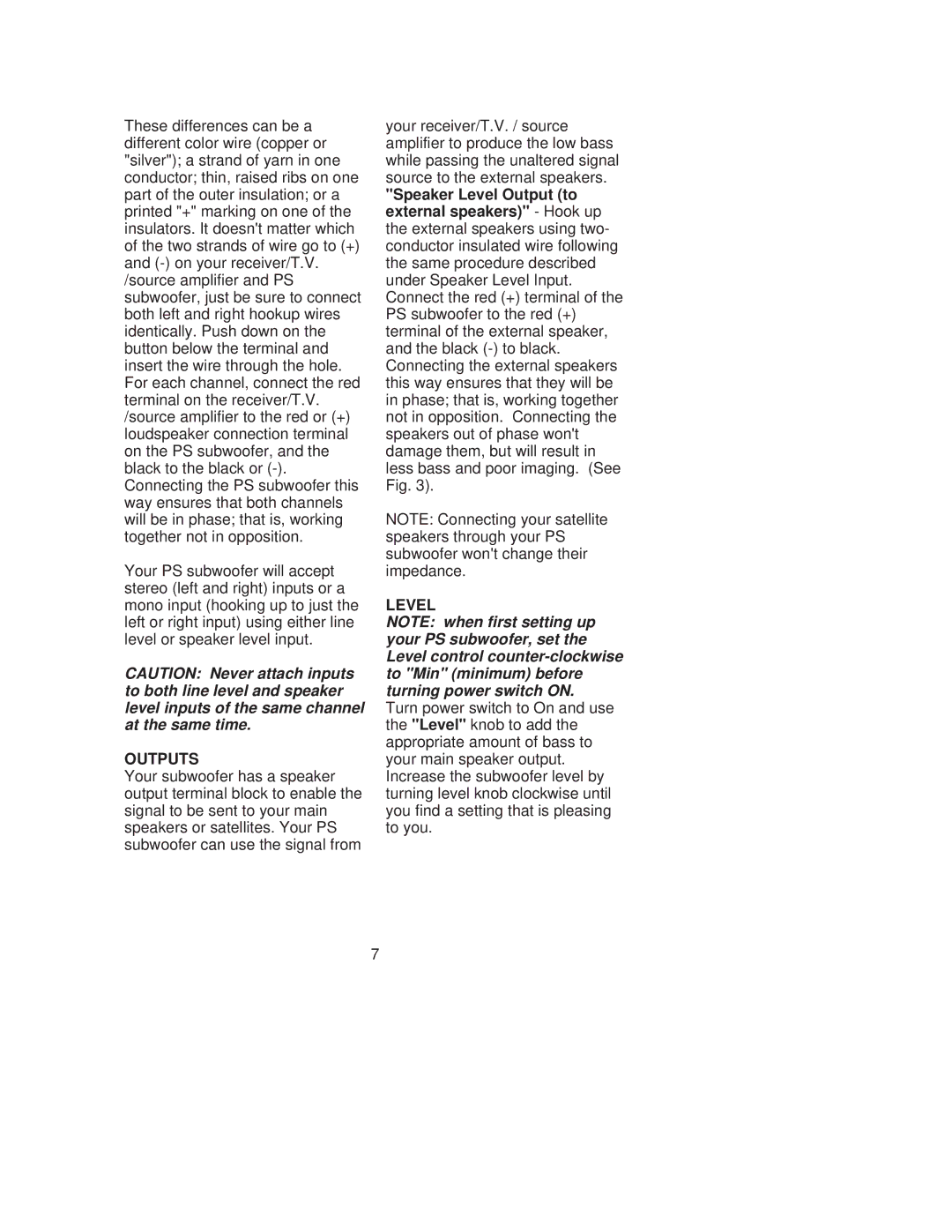PS120, PS100, PS60 specifications
The JBL PS60, PS100, and PS120 are part of JBL's renowned range of professional speakers, designed to deliver exceptional sound quality and reliability in various audio environments. These models are widely utilized in live performances, installations, and other venues that require clear and powerful audio delivery.Starting with the JBL PS60, this compact speaker is engineered for applications where space is limited but sound quality can't be compromised. It features a 6.5-inch low-frequency driver and a high-frequency compression driver, capable of producing balanced mid-range frequencies and crisp highs. The PS60 is equipped with a high-performance crossover, which efficiently distributes sound frequencies to the appropriate drivers, resulting in a coherent audio experience. Its lightweight design and versatile mounting options make it perfect for mobile setups or permanent installations.
Moving to the PS100, this model offers an upgrade in terms of sound power and versatility. With an 8-inch low-frequency driver, the PS100 can deliver more impactful bass while maintaining clarity across the frequency spectrum. A significant feature of the PS100 is its rugged, plywood enclosure, designed for durability, which is essential for frequent transportation. It also incorporates a front grille designed to withstand the rigors of live use, preventing damage to the drivers. The PS100 can be used in a variety of configurations, serving as either a main or a fill speaker, making it a flexible choice for any sound reinforcement scenario.
Finally, the JBL PS120 is the pinnacle of this range, featuring a 12-inch low-frequency driver that produces deep, resonant bass while maintaining excellent vocal intelligibility. Its increased power handling capability allows it to fill larger venues without distortion, making it ideal for concerts, conferences, and larger functions. The PS120 employs advanced speaker technologies, such as neodymium magnets for enhanced efficiency and lighter weight, making setup and transport easier. Furthermore, the system's extensive protect circuit ensures optimal performance under all operating conditions, safeguarding against potential damage from power overloads.
Overall, the JBL PS series, including the PS60, PS100, and PS120, showcases JBL's commitment to quality and performance. Each model is tailored to meet specific needs while delivering the rich, vibrant sound that JBL is known for. Whether used individually or as part of a larger sound system, these speakers embody reliability and acoustic excellence, making them ideal for professional audio applications across different settings.

